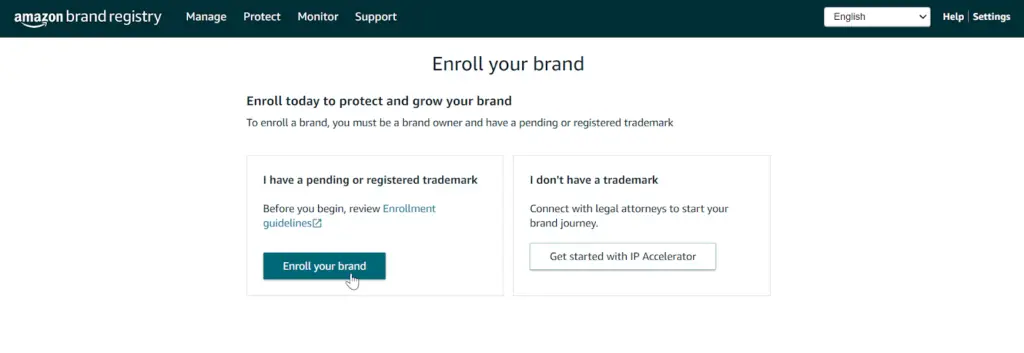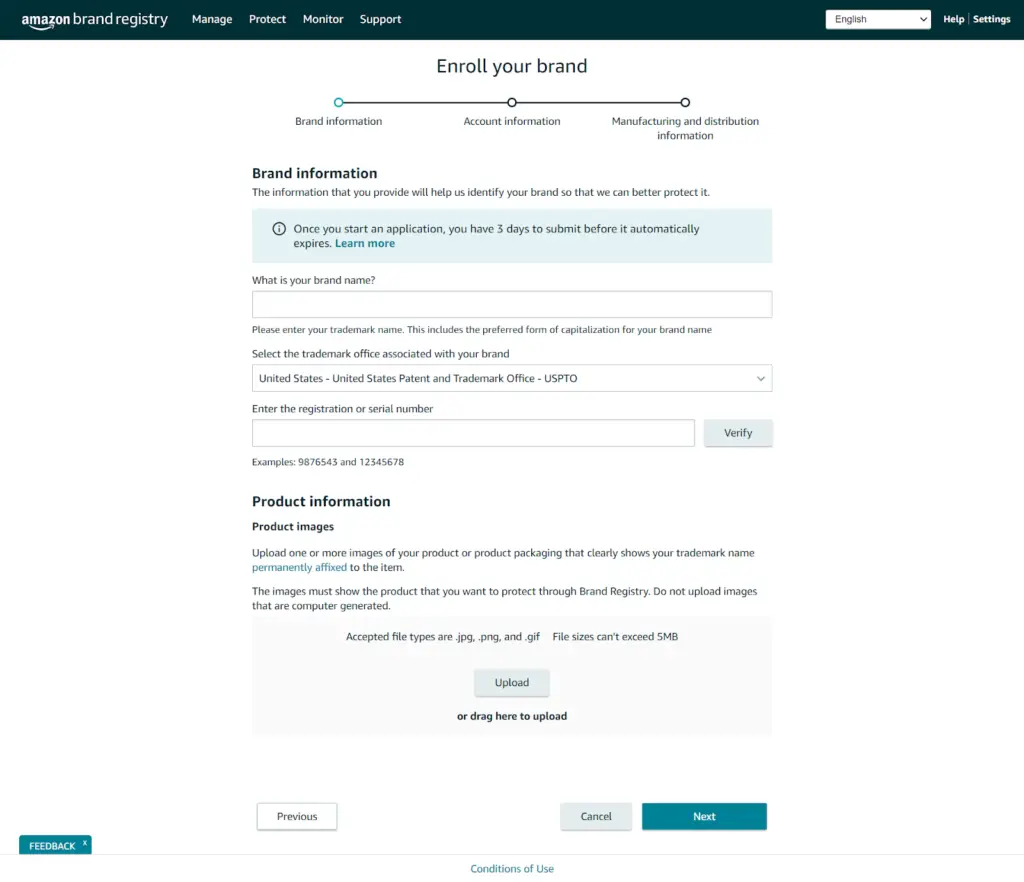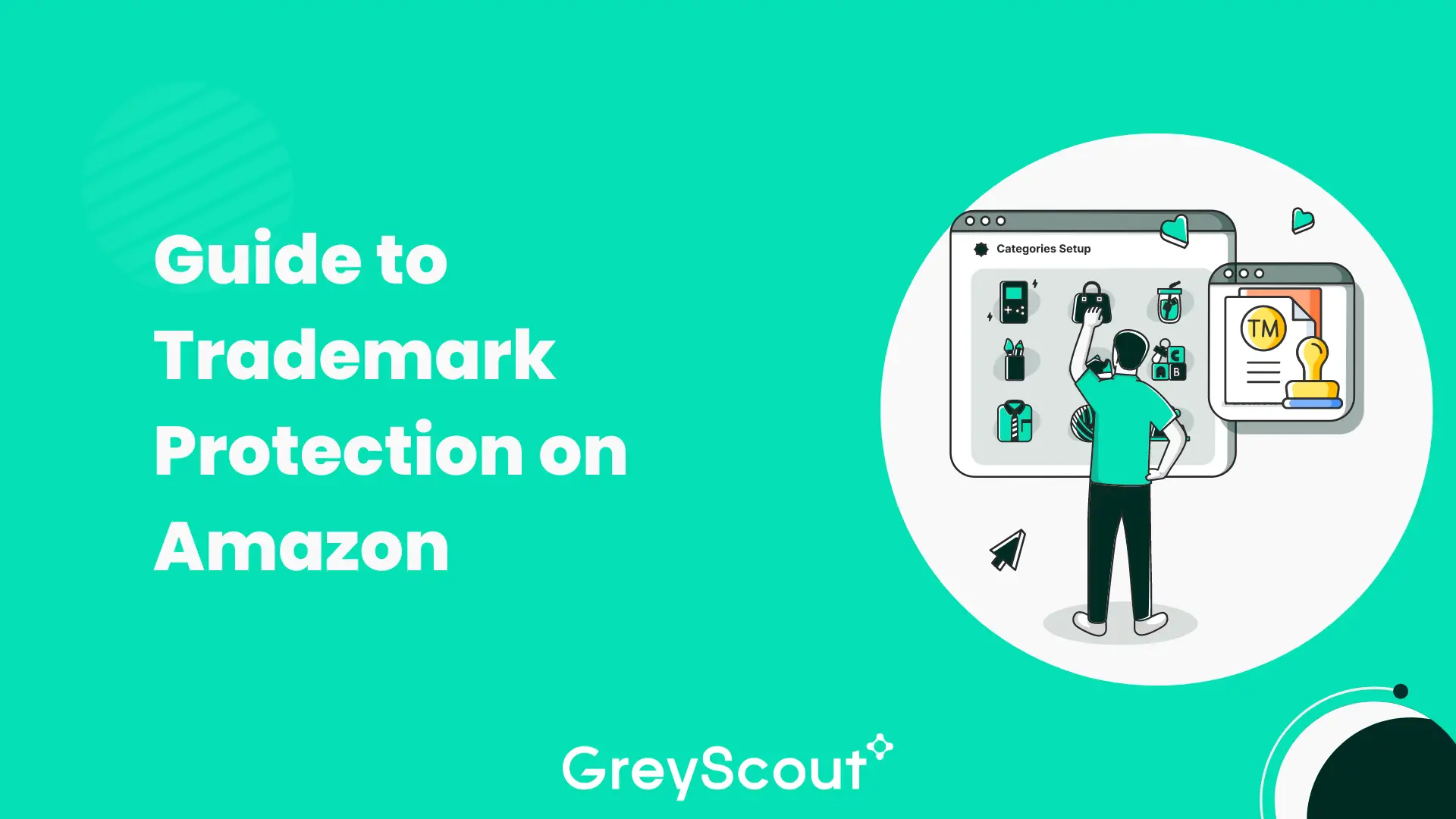As the world’s largest online marketplace, Amazon provides a vast platform for businesses to sell their products and build their brand. However, with Amazon listing over 2 million SMBs as third-party (3P) sellers, the competition has increased manifold. Some sellers have been found to indulge in unethical and sometimes illegal shortcuts. This has made it essential to protect your brand from Intellectual Property (IP) infringement, trademark infringement and other types of unauthorized use.
This guide aims to provide an overview of trademark protection on Amazon by covering some key topics, including what we mean by a trademark, the benefits of trademark protection, how Amazon can help protect trademarks and the steps to get trademark protection. So, let’s dive right in and explore the world of trademark protection on Amazon.
What is a trademark?
In essence, trademarks are unique identifiers such as product or service names, logos, taglines, or slogans that businesses primarily use to make their products and services stand out from those of their competitors. A trademark serves as a form of protection that gives you exclusive rights to use it in connection with your products or services. It can be registered with the federal agency for granting patents and trademarks in America, the United States Patent and Trademark Office (USPTO), or with a government Intellectual Property Office in your respective country, providing additional legal protection against infringement.
Why is trademark protection crucial?
Over time, customers develop a sense of familiarity with brands through consistent advertising, marketing, and trademark strategies. This establishes trust and ultimately drives business growth. However, when sellers infringe upon trademarks, it can directly eat into the revenues of a business, proving to be detrimental to a company in the long run.
Registering a trademark gives your business a solid safety net. It gives you the power to secure your own IP rights through legal options such as enforcing your trademark rights through prosecution, issuing cease and desist letters to third-party sellers to stop using the same or similar trademarks, or seeking damages through the court for unauthorized use of your trademark.
All these recourses are available to you if your brand’s trademarks are registered with your own country’s Trademark Office or Intellectual Property Office. Nonetheless, registering your trademark once is not enough to maintain trademark rights. It is also important to consistently use trademarks, to ensure it is not assigned as abandoned and open for use by other companies.
Today, with a significant proportion of global e-commerce transactions taking place on Amazon, it too has its own tools in place for trademark protection. The Amazon Brand Registry is an online space where businesses can file their registered trademarks. Once filed, Amazon helps you enforce trademark rights on 3P sellers who may be violating them.
How to best protect your trademarks on Amazon
The Amazon Brand Registry is a suite of tools that’s extremely valuable for trademark protection. It allows you to search for potential violations of intellectual property rights across all listings on Amazon. Once an infringement is identified, you can use advanced reporting tools to report them. These reports are then used to further strengthen automated protections against future violations.
The automated protections feature utilizes predictive protections to safeguard your intellectual property. By using advanced machine learning algorithms, it identifies and stops bad listings even before they’re published.
Moreover, Amazon Brand Registry also provides brand support, letting you speak to real people to help resolve marketplace policy violations and so on, thus making it an essential addition to your trademark protection toolkit.
Steps to get trademark protection on Amazon
To get trademark protection on Amazon, you must first have a pending or active registered trademark in the countries where the trademark needs to be enrolled and enforced. So, the first step is to register a trademark in your own country’s Trademark Office.
Step 1: Get your trademark registered in your own country’s Trademark Office
Every country generally has their own process for registering trademarks. To successfully register a trademark, one must file an application with the appropriate Intellectual Property Office specifying the particular goods or services associated with the brand.
A trademark should demonstrate an adequate level of distinctiveness or uniqueness. Generic names like ‘colour pencils’ cannot be protected under trademark law, as this should be allowed to use by every company selling colour pencils. Trademarks that are completely made up or have no connection to the products or services they represent, like Xerox, Apple, or HubSpot, are considered arbitrary or fanciful and are granted the strongest level of protection. However, these may require extensive advertising and marketing efforts to make consumers recognise them.
A smart way to pick a trademark is by striking a balance between distinctiveness and relevance. This can be done by choosing a trademark with a suggestive meaning. For instance, the name ‘Burger King’ provides consumers with some context about what the company sells and is still quite distinctive. Finding this sweet spot between being generic and arbitrary can ensure trademarks are immediately protected and registered with the Trademark Offices of their respective countries without hassle.
Once you’ve decided on the trademark, it’s important to hire a trademark professional to carry out extensive research. This is to ensure that your trademark doesn’t infringe upon an existing brand trademark, therefore avoiding any monetary or legal risks for your company in the future. It is important to note that from the date of filing, the process of trademark registration can take anywhere between six to 12 months depending on the country of registration.
Step 2: Enroll on the Amazon Brand Registry

The Amazon Brand Registry is open to sellers and enrolment can be completed in three steps. The first step is to check eligibility requirements and guidelines. As we know, the Amazon Brand Registry requires having a registered trademark with a Trademark Office or an Intellectual Property Office in your own country. In cases where trademark registration is in process, a trademark filing number may be enough. In this case, Amazon may only provide trademark protection to the listings active at the time of filing. In a few months, Amazon may check back with you and if the trademark registration is still not complete, it may remove your brand from the Registry forfeiting all your trademark protection features.
At present, the Amazon Brand Registry exclusively recognizes trademarks that have been granted by official Trademark Offices of the United States, Brazil, Canada, Mexico, Australia, India, Japan, France, Germany, Italy, Turkey, Singapore, Spain, Saudi Arabia, the United Kingdom, Egypt, Sweden, Poland, Benelux, the European Union, and the United Arab Emirates.
The second step in the process of enrolment is to sign into the Amazon Brand Registry. An important thing to remember while signing in is that the applications must only be submitted by the trademark owner.
Once signed in, the third and final step is to enrol your brand. At this stage, you will also need to provide some key information such as the brand name with an active/pending trademark registration, the trademark registration number provided by the Intellectual Property Offices and a list of categories under which your products are to be listed. Once Amazon receives this information and verifies you are the trademark rights owner, your brand will be enrolled. This process may take around two weeks.

Step 3: You’re ready for the Amazon Brand Registry toolkit
Now that you’re signed in, enrolled and verified, voila! You’re all set to enjoy trademark protection benefits through the Amazon Brand Registry. From automating protections, reporting violations, getting support from real agents, and keeping tabs on potential bad listings through the impact dashboard, Amazon Brand Registry will let you enforce your trademark rights on the platform in just a few clicks.
If you’ve reached the end of the article you understand the importance of trademarks in brand recognition and consequently, business growth.
By investing in trademark registration and enrolling in the Amazon Brand Registry, you can safeguard your brand from IP and trademark infringement and prevent revenue loss in the future.
At GreyScout, we understand the importance of brand protection, and we’re here to help. As a SaaS-based solution, we’ve helped countless companies of all sizes and industries keep track of and enforce against trademark infringing product listings listed by unauthorized 3P sellers, grey marketers and other infringers.
GreyScout’s Brand Protection Platform’s 3-step helps detect trademark infringers, verify authorized 3P sellers and the product inventory they are listing on eCommerce marketplaces, and to enforce against malpractices harming the revenues of brand products and infringing brand policies.
GreyScout’s Brand Protection Software integrates seamlessly with eCommerce channel’s IP tools such as the Amazon Brand Registry, eBay Vero and more, to ensure that brand products are safeguarded from trademark malpractices, helping brands take back control of their revenues and ensure consumer safety.
Get in touch to learn more about brand protection and take the first step towards future-proofing your business.
Bonus: In addition to the brand registry, Amazon also offers 4 programs with varying levels of protection for businesses selling on the platform: Transparency, Project Zero, Counterfeit Crimes Unit, and IP Accelerator. Each program provides a different set of features to help protect brands from various threats. Here’s a GreyScout blog highlighting on them the topic.

